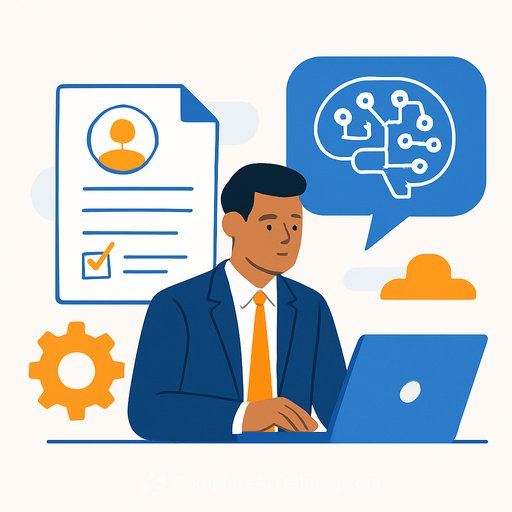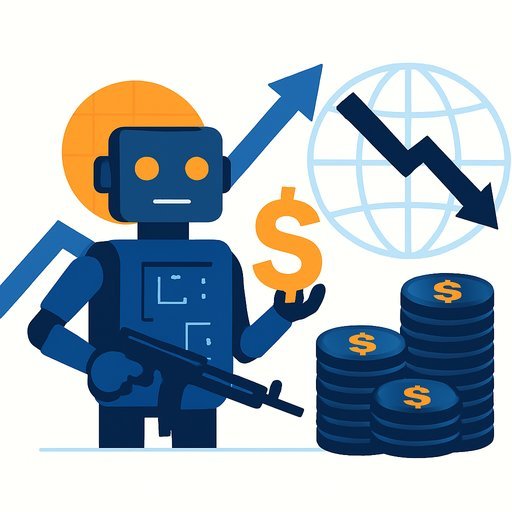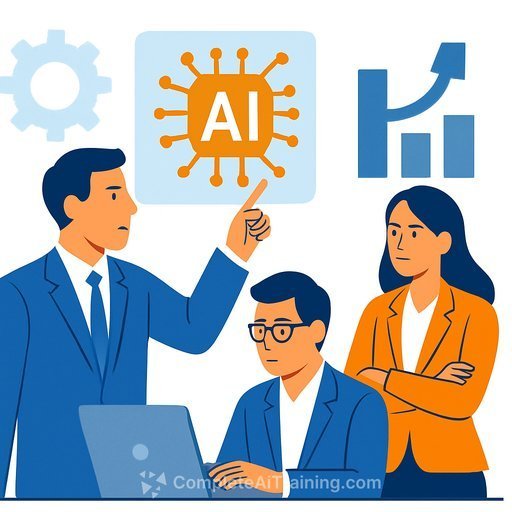AI Strategy: How JPMorgan Is Embedding AI Into Employee Performance
Executives are moving from pilots to policy. JPMorgan Chase is giving managers the option to use its in-house large language model to draft annual performance reviews. The move, backed by CEO Jamie Dimon, signals a practical shift: AI is moving into core people operations, not just experimentation.
Inside JPMorgan's Approach
Managers can prompt the firm's proprietary LLM to generate review drafts, saving time across teams with many direct reports. The tool supports structured inputs and produces text managers can refine before submission.
JPMorgan rolled out its LLM Suite in early 2024 and onboarded 200,000 users in eight months. In an internal memo, executives including Mary Callahan Erdoes and CIO Mike Urciuoli framed it simply: "Think of LLM Suite as a research analyst that can offer information, solutions and advice on a topic." Building it in-house gives the bank more control over data security and access to third-party models.
Training and Upskilling at Scale
The bank has tagged AI as a core part of its US$18bn technology budget for 2025. Chief Analytics Officer Derek Waldron outlined a segment-by-segment training plan aimed at getting every employee fluent in applying AI to their role.
"First, the employee base at large: we need to train them to get comfortable using and understanding AI tools now available and think about how to put them to good use daily," he said. JPMorgan's "AI Made Easy" program has already engaged tens of thousands, and engineers are being upskilled to build scalable systems using agents and LLM components.
The Wider Market: Citi and Goldman Move in Parallel
Citigroup is accelerating its AI agenda under CEO Jane Fraser. A June memo from leaders including Gonzalo Luchetti and Tim Ryan prioritized connecting teams, speeding use cases and scaling across functions. On the Q3 earnings call, Fraser noted that 180,000 employees in 83 countries now have access to the bank's AI tools and that automated code reviews are saving roughly 100,000 developer hours per week - a clear operational gain.
Goldman Sachs committed US$6bn to technology this year. CEO David Solomon has said he would spend more if he could. The firm launched an internal AI assistant over the summer; CIO Marco Argenti described it as "the ultimate librarian that knows how to find the information." The signal is consistent: AI is becoming standard issue for frontline productivity in finance.
What This Means for Executives
AI inside performance reviews isn't just a time-saver. It forces decisions on governance, culture and capability. Here's how to make it work without adding risk.
Operating Model
- Define where AI drafts vs. where humans decide. Performance outcomes and compensation remain human-owned with clear sign-offs.
- Embed audit trails: who prompted, what changed, and final approver. Keep version history tied to HR systems.
- Establish bias checks. Sample outputs across roles, demographics and geographies. Document variance, retrain prompts or models as needed.
Training Strategy
- Role-based paths: baseline literacy for all; advanced workflows for managers and HR; deep systems training for engineers.
- Make prompts reusable. Provide templates for reviews, feedback summaries and development plans. Maintain a shared library with examples and "what not to do."
- Measure adoption by use case, not just logins. Track cycle time per review, edit rates and satisfaction of both managers and employees.
Technology Choices
- Decide build vs. buy. JPMorgan's in-house suite shows the value of tighter data control; vendors may accelerate time-to-value. Many firms end up hybrid.
- Guardrails first: PII protection, role-based access, retrieval boundaries and content filters specific to HR.
- Instrument everything. Keep prompts, outputs and redlines for quality review and regulatory inquiries.
Policy and Change Management
- Make AI optional at first with clear guidelines. Require human review, employee visibility into final text and an appeal path.
- Refresh HR policies: disclosure language, acceptable use, and consequences for overreliance or misuse.
- Communicate the "why": consistency, speed, and better coaching - not a shortcut to judgment.
Implementation Checklist
- Start with one cycle (e.g., mid-year reviews) and a defined population. Limit to standardized competencies and goals.
- Ship a curated prompt pack and style guide. Include examples of high-quality reviews and edge cases.
- Run a quality board with HR, Legal, Compliance and DEI to review samples weekly in the pilot.
- Stand up office hours and a help channel. Track the top 10 issues and update prompts and guidance weekly.
- Set hard metrics: time saved per manager, edit delta from draft to final, bias checks, employee sentiment and incident rate.
- Plan deprecation of legacy steps (e.g., redundant templates) once the new process stabilizes.
What to Watch Next
- Regulatory expectations on AI use in employment decisions and documentation practices.
- Quality benchmarks: fewer review disputes, clearer goals and better development plans.
- Expansion into adjacent workflows: goal-setting, coaching plans, calibration notes and promotion packets.
- Cross-bank performance: hours saved, accuracy gains and where firms draw the line between assistance and decision-making.
Resources
If you're planning a company-wide upskilling push, you can map training to roles and functions here: AI courses by job. For finance-specific tool research, start with this curated overview: AI tools for finance.
The takeaway is straightforward: leaders who set clear guardrails, train by role and measure outcomes will see real efficiency gains without sacrificing fairness or control. JPMorgan, Citi and Goldman are showing the direction. The question is how quickly your org can operationalize the same playbook.
Your membership also unlocks:






